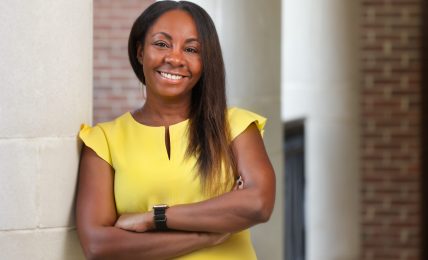Test your law school knowledge!
In 1845, the University of North Carolina became the first institution of higher learning in the state to offer students a program of study in the law. What degree was originally offered in 1845?
A. Bachelor of Laws
B. Master of Laws
C. Juris Doctor
D. Professional Certificate in Law
Click for answer
A. Bachelor of Laws.
The University of North Carolina copied the practice of English universities at the time and offered a bachelor’s degree in law. Law students seeking admission to this new legal studies program were not required to already have an undergraduate degree. Instead, the Bachelor of Laws itself was an undergraduate degree!
If you’ve ever been inside the UNC School of Law, you’ll know some of the places where you’re most likely to find students: the rotunda, the law library, and the courtroom. Do you know who the courtroom is named after?
A. Burton Craige
B. Graham Kenan
C. Aubrey L. Brooks
D. Arch T. Allen
Click for answer
B. Graham Kenan.
The Graham Kenan courtroom is named in honor of the late husband (and UNC Law alum!) of Sarah Graham Kenan, who provided the funding for the construction of the courtroom. When Sarah and Graham met in 1912, he was a lawyer in Wilmington, North Carolina. Sadly, Graham passed away in 1920, but Sarah’s commitment to the law school ensured that his memory lives on to this day. The Graham Kenan Courtroom continues to serve as a central part of student life at Carolina Law. Law students regularly conduct their final trials for trial advocacy classes in the room, the Holderness Moot Court hosts its final round of arguments for team tryouts there, and the North Carolina Court of Appeals even used the courtroom as the site for oral arguments.
Who was UNC School of Law’s first Professor of Law?
A. James Cameron McRae
B. John Hall Manning
C. William Horn Battle
D. Lucius Polk McGehee
Click for answer
C. William Horn Battle.
William Horn Battle graduated from the University of North Carolina in 1820, and he studied law for three years in the office of N.C. Supreme Court Chief Justice Leonard Henderson. Remember that law schools were not yet commonplace in America, and those who wished to become lawyers would typically apprentice themselves with practicing attorneys. In addition to practicing law, Battle served as the reporter for the state supreme court from 1834-1840. He became a professor of law at the University of North Carolina in 1845 and was the first professor to teach courses toward a Bachelor of Laws at the university.
What was the name of the first woman to graduate from the UNC School of Law?
A. Lillian Rowe Fry
B. Daisy Strong Cooper
C. Margaret Kollock Berry
D. Doris Roach Bray
Click for answer
C. Margaret Kollock Berry.
These are all women who can claim important firsts in the history of the UNC School of Law, but Margaret Kollock Berry holds the rights to the title of first female graduate of the law school, completing her degree in 1915! In case you are curious about the other names on this list of trailblazing women, Lillian Rowe Fry was the first women accepted to Carolina Law in 1911. Daisy Strong Cooper was a member of the class of 1925 and holds the distinctive honor of being the first female student editor of the North Carolina Law Review. Doris Roach Bray, Class of 1966, was the first Editor-in-Chief of the North Carolina Law Review.
What is the name of the case that finally cleared the way for African-American students to enroll at the UNC School of Law?
A. Cooper v. Aaron (1958)
B. Briggs v. Elliott (1952)
C. Swann v. Charlotte-Mecklenburg Board of Education (1971)
D. McKissick et al. v. Carmichael et al. (1951)
Click for answer
D. McKissick et al. v. Carmichael et al. (1951).
In June 1951, five African-Americans, Harvey Beech, James Lassiter, J. Kenneth Lee, Floyd McKissick, and James Robert Walker enrolled in classes at the law school at the University of North Carolina at Chapel Hill (Carolina Law). Their enrollment and attendance at Carolina Law was the result of years of efforts to desegregate higher education in the U.S. The National Association for the Advancement of Colored People (NAACP) litigated case after case, building precedent for U.S. Supreme Court challenges to racial segregation, in education and in all areas of society. McKissick v. Carmichael, the 1951 case that removed the legal barrier to African-American admission to Carolina Law, was one of those cases.



